The 2020 edition of the International Garden Festival at the Les Jardins de Métis / Reford Gardens, Canada, features five contemporary gardens which draw inspiration from the theme of métissages, or “cross-breeding”.
Happening in the midst of a pandemic, meant that 2020 was a very special year. While the five design teams (chosen from among 200 international applications) were unable to travel to Grand-Métis in June, the Festival team built their installations so that visitors to the Reford Gardens could enjoy the “métissages” they had imagined.
Organisers explained the theme of métissages, “cross-breeding” in the context of contemporary gardens can be of practices (landscape architecture, garden design, architecture, visual arts, industrial design, cuisine and other fields of creative expression), plants (native or exotic) and materials (natural and manufactured). This mix of approaches enriches and excites, creating new opportunities for exploration.
The International Garden Festival is the most important contemporary garden festival in North America. Since it began in 2000 to celebrate the new millennium, more than 1 million visitors have explored the Festival gardens and been inspired by the more than 200 projects that have been exhibited.
The Festival provides a unique dialogue between the past and the present and an ongoing conservation of innovation, tradition and conservation. Architects, landscape architects, visual artists and designers contribute to expanding the horizons of the garden and to the ongoing reinvention of this unique shoreline environment along the St. Lawrence River.
The new 2020 gardens:
Augmented Grounds: by Soomeen Hahm, Architect, Jaeheon Jung, Architect and Yumi Lee, Landscape Architect. Seoul (South Korea)
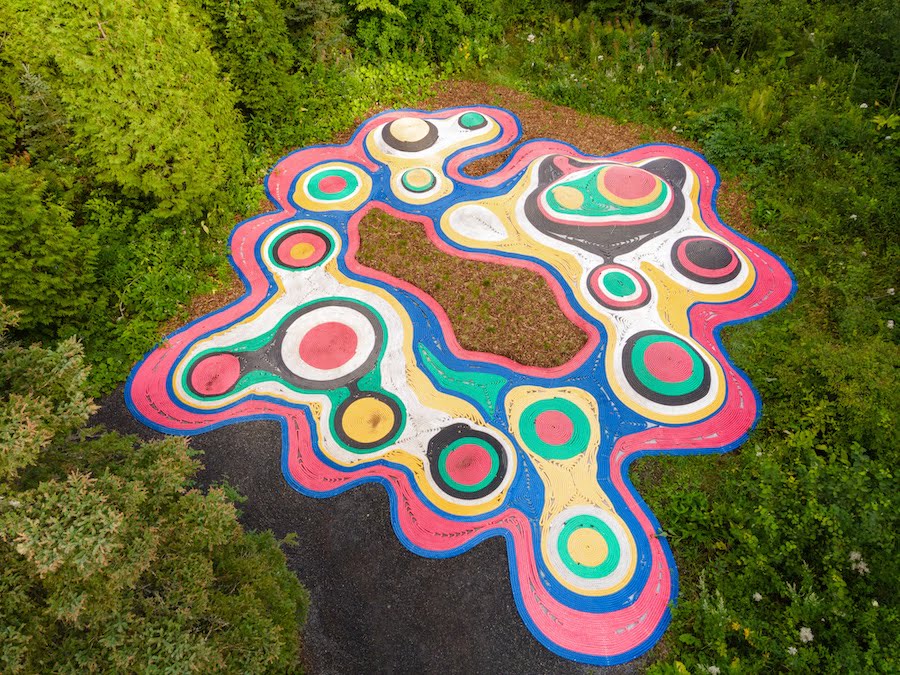
Augmented Grounds. Photo credit.Jean-Christophe Lemay
Augmented Grounds is inspired by the traditional sash of the Métis nation of the Western Plains. The garden represents harmony through colourful ropes that are tightly laid on top of sculpted terrain.
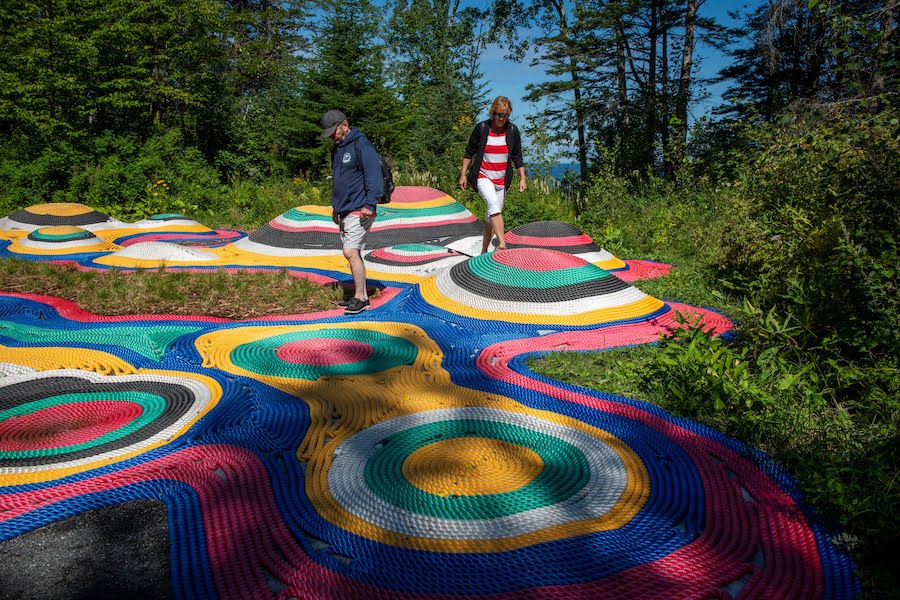
Photo credit: Martin Bond
The designers are experts in design research and practice, interested in exploring harmonious ecology of humans, computers and machines. They are currently focusing on ways of constructing complex forms to develop unique construction processes that cannot be done entirely by automation nor by human labour.
Corps de resonance: by Charlotte Barbeau, Designer, Leila Desrosiers, Designer, Félix Roy, Environmental Designer and Jean-Benoit Trudelle, Intern in architecture. Montreal (Quebec) Canada

Corps de résonance. Photo credit. Jean-Christophe Lemay
This musical folly takes form in a forest glade. Visitors move in and around this giant instrument that comes to life in the playing, vibrating along with the sounds of the forest.
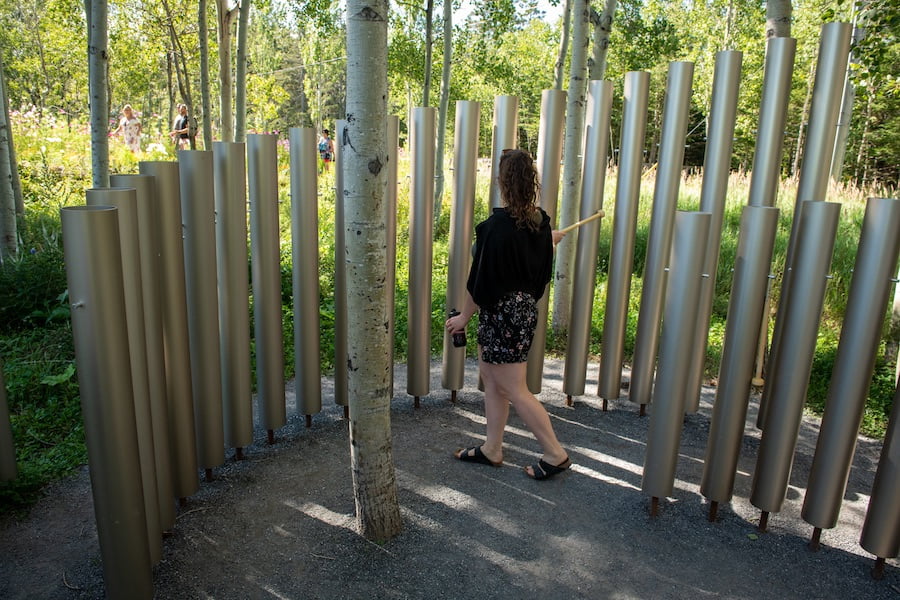
Photo credit. Martin Bond
Charlotte Barbeau, Leila Desrosiers and Félix Roy are environmental designers, graduates of the École de design de l’Université du Québec à Montréal (UQAM). Jean-Benoit Trudelle has a Master’s degree in architecture from the Université de Montréal. They came together to work on this project as a multidisciplinary team with the ability to create objects, architecture and landscape.
ENTWINE: by Waiyee Chou, Landscape Architect and Carlos Portillo, Landscape Architect.Toronto (Ontario) and Montreal (Quebec) Canada
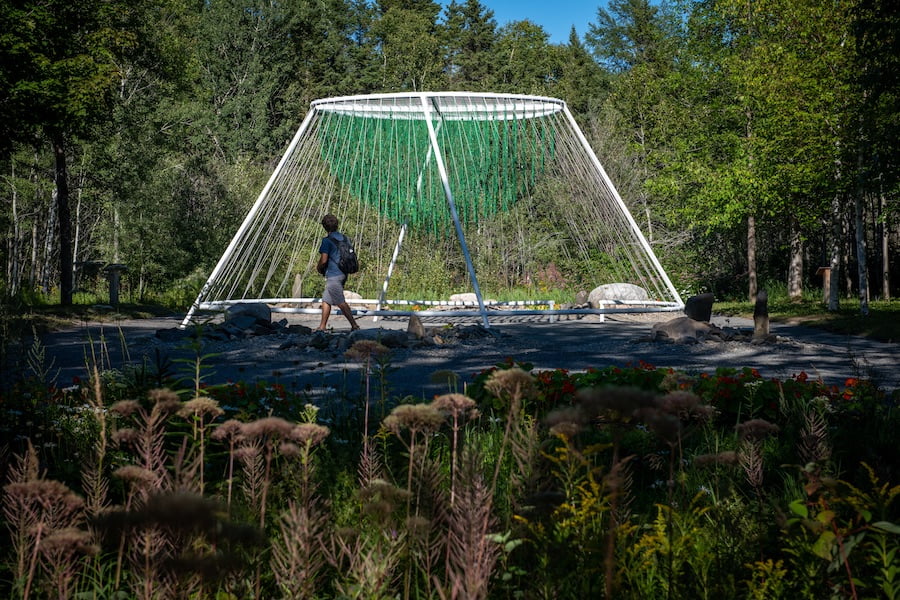
ENTWINE. Photo credit. Martin Bond
Entwine incorporates the ancient knot-tying technique of macramé to highlight the varieties of plants hybridised for horticulture. Inside a spiral, visitors are free to wander between suspended vessels and become entwined with the structure’s cords.
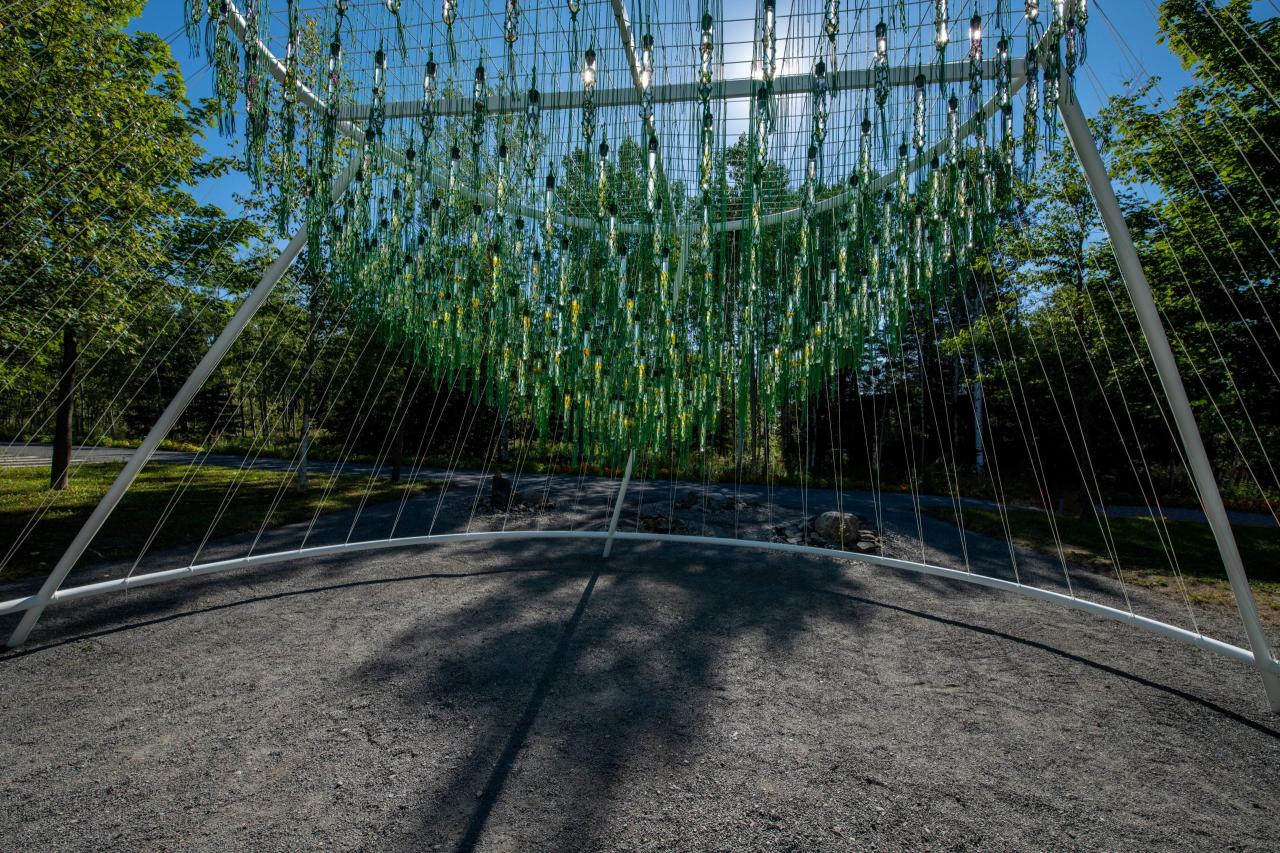
Photo credit. Martin Bond
Waiyee Chou and Carlos Portillo are graduates of the Master of Landscape Architecture program at the University of Toronto. Waiyee worked at Urban Strategies, the Urban Design Section of the City of Toronto and with Forest and Field Landscape Architecture. Carlos is a landscape architect who works at Claude Cormier et Associés. He is currently working on the design and construction of a park for the downtown area of Toronto.
Forêt corallienne: by Lucie Bulot, Architect and Dylan Collins, Designer. Montreal (Quebec) Canada
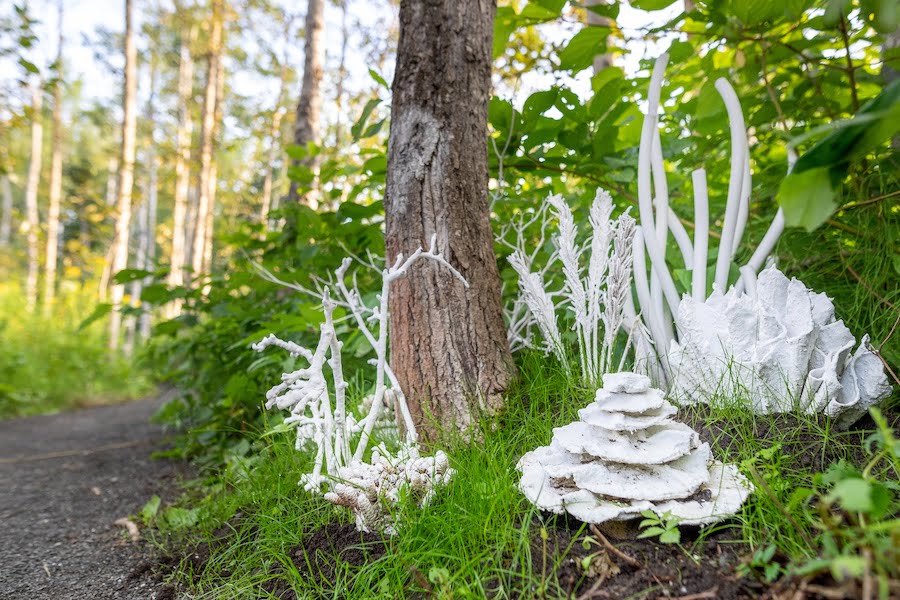
Forêt corallienne.Photo credit. Jean-Christophe Lemay
Forêt corallienne is a coral forest of a different kind. A community of limestone creatures takes root in the forest, a métissage of colour and form that creates an unusual landscape and a new hybrid world.

Photo credit. Martin Bond
Lucie Bulot is an interior architect HMONP, a graduate of the École nationale supérieure d’architecture (ENSA), Paris-Val de Seine. Dylan Collins is an architect DE, graduating from l’ENSA Paris-Malaquais. They have lived and worked in Montreal since 2019. Their collaborative work began in 2017 with the creation of their garden installation Éternelles éphémères as part of the Festival International des Jardins de Chaumont-sur-Loire. In 2019, they created Neiges éternelles as part of the Passages Insolites event in Vieux Québec.
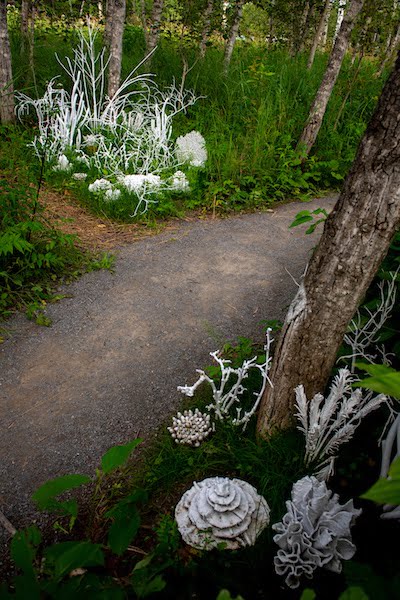
Photo credit. Martin Bond
(Mé)Tissages: by Duc Truong, Architect. Strasbourg (France)
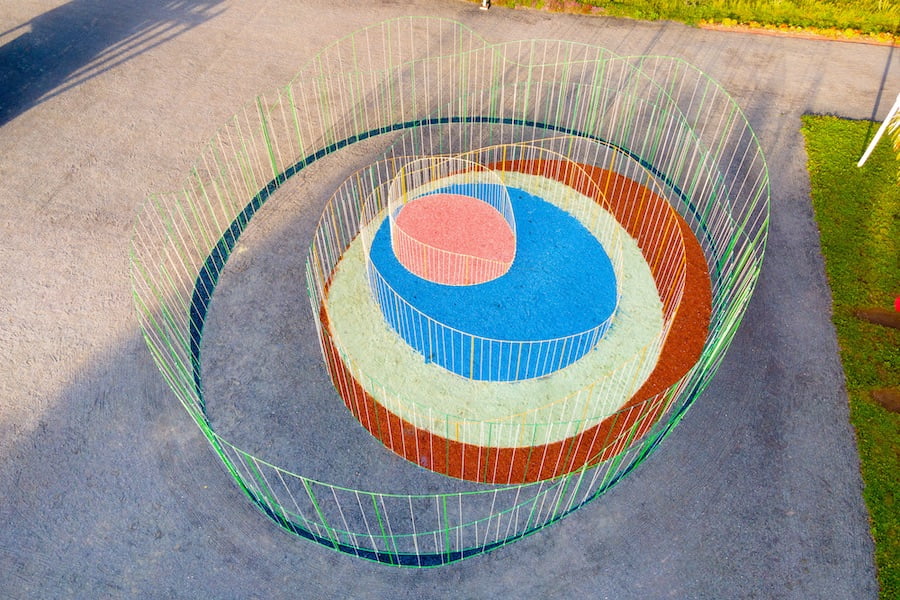
(Mé)Tissages. Photo credit. Jean-Christophe Lemay
(Mé)Tissages is a woven landscape that invites visitors to enter through layers of coloured cords into a space created by the weaving of various elements. This experimental garden unites visitors through a shared experience of an installation that combines architecture and nature.
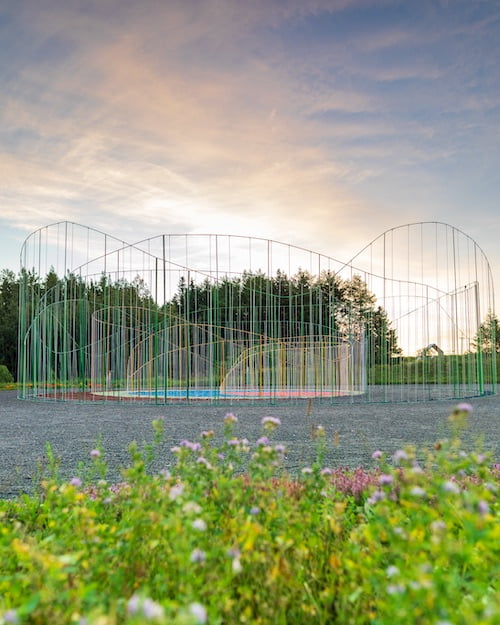
Photo credit. Jean-Christophe Lemay
Duc Truong is an architect with a degree from the École d’architecture de Strasbourg. He co-founded the architectural studio Figures vives in 2017 and then left for Tokyo to work for Sou Fujimoto Architects, where he developed a genuine interest in the métissage of architecture and nature. After a year and a half in Japan, he returned to Europe and continued his apprenticeship in architecture at O.M.A. (Office for Metropolitan Architecture) in Rotterdam in the Netherlands.
